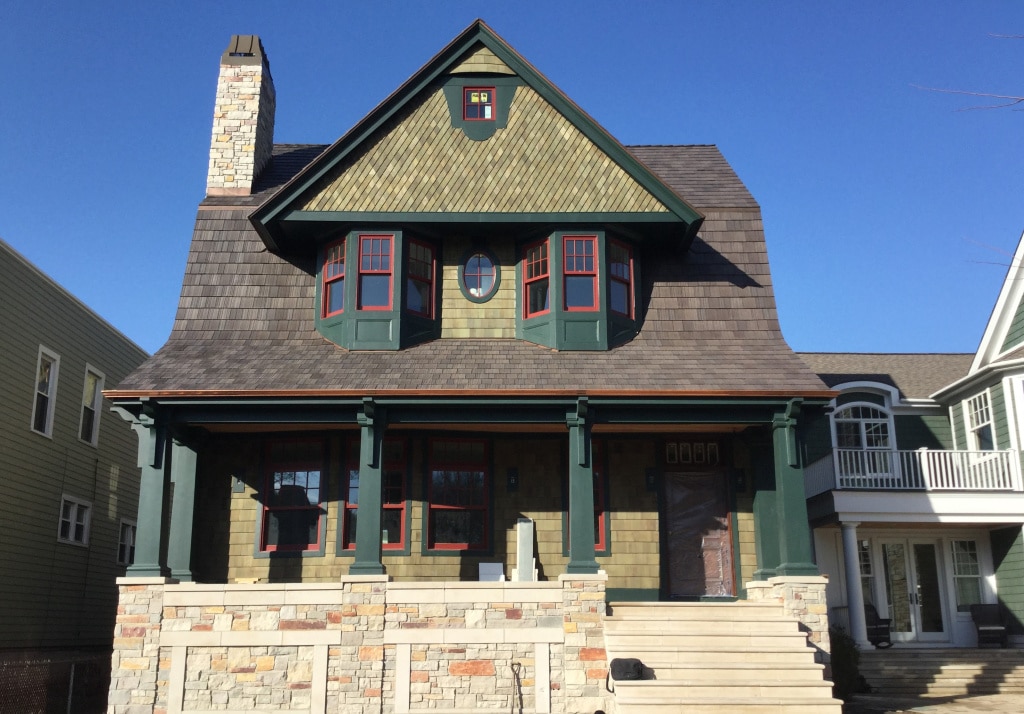How Light Affects Colors of Your Home
To understand how different types of light affects colors, you have to know a little about what light is, how it works, and its relationship to color.
Light is one of the many waves found on the electromagnetic spectrum. Other waves on the spectrum include ultraviolet, radio, microwaves, and X-rays. What differentiates light from the others is that it is the only one the human eye can detect.

All the colors we see are a byproduct of spectrum light, as it is reflected off or absorbed into an object. All of the colors we see are a byproduct of spectrum light, as it is reflected off or absorbed into an object. A surface that reflects back all of the rays of light will appear white; one that absorbs all the beams looks black.
The millions of other colors are a combination of light rays being absorbed and reflected. Grass, for example, absorbs all colors except the ones that make up its color of green.
How Natural Light Affects Colors
Natural light can vary greatly depending on the weather, the season, the time of day, the position of the sun in the sky, the location of the building, and where the space is inside the building. Understanding these factors can help you to anticipate how natural light affects colors.
Northern Light
The light from a northern direction can cast a cool, blue-to-gray tint on the objects it washes over. North light is indirect and can make colors appear darker and less saturated. Consider this as you look at a sample of the paint or roofing you are considering. For a home facing north, you will want to ensure the color you selected comes to life once on your home
You may need to compensate for the lighting by considering a roof tile or paint color that is slightly lighter than you first thought to give you a look you are after. Inside your home, colors that work best with northern light are light in value and clear or bright rather than grayed or muted. For your front door or other accent colors on a home facing north, go with a slightly more intense color.
One of the nice things about selecting colors for a northern exposure is that it is the most diffused light and remains relatively consistent throughout the day. The diffused light is why your inside and out color will look basically the same throughout the day with north light.

Southern light adds to the warmth and beauty of DaVinci Shake in Tahoe
Southern Light
On the other hand, homes with southern exposure will benefit from beautiful warm light; however, the light can become intense or glaring at midday. To solve this problem on the interior, use muted colors with a bit of grey to absorb some of the intense light so the room feels more comfortable.
Choose colors that won’t look washed out on the exterior in the intense noontime sun. It is important to sample your colors and look at them throughout the day or, better yet, for several days to make sure the colors are not too bright in the early morning or late afternoon light.
Western Light
Like southern light, western exposure is also warm. It casts a yellowish-orange light that changes throughout the day as the sun moves across the sky. This light is softer and more yellow in the morning, shifting to intense and reddish orange in the late afternoon. Colors that are warm and not too muted or grayed can work well. Brown and warm earthy color comes to life in southern light. The warmer blue and green can also work well inside and out.
Eastern Light
The light from eastern exposure is soft and can be bluish or yellowish depending on location. It is neither as cool as northern light nor warm as southern or western light. It enhances lighter colors
The Effects of Artificial Light
Artificial light supplements natural light, so knowing how light affects colors in a space when selecting colors is essential. The type of artificial lighting in an area influences how a color looks. Some of the most common sources are fluorescent and incandescent bulbs, halogen bulbs, and LED lighting.
Halogen lighting is nearly white and the closest to natural light on a clear day around noon. Fluorescent lighting is more bluish, although now some fluorescent bulbs produce light bands close to daylight. Incandescent lighting has a yellowish light.
When considering how your lighting and colors will work together, consider that warm, yellowish light can intensify warm colors and mute cooler hues, while cool bluish light does the opposite. For example, incandescent lighting casts a warm glow that can enhance reds, oranges, and yellows; Cool fluorescent light works best with blues, violets, and greens
Look At The Colors In Context
Knowing how lighting affects color can help you understand why a color doesn’t look as expected. But remember that this is only one factor among many that can change how a color appears. There is atmospheric impact, the texture of the surface, and the adjacent colors, to name a few. That is why you must make your decisions while looking at the colors exactly where you plan to use them and at different times of the day. The more you understand how other factors can change color, the better your chances of finding a color you will be pleased with for your home.
If you enjoyed learning about how light affects colors, I think you’ll also like my last post Color Lesson: Defining Colors
Even More FRESH Ideas for Selecting Colors for Your Home Exterior
- For more help finding the perfect color scheme for your home, our ebooks offer easy-to-follow processes for choosing the colors in every part of your home. Download a free ebook.
- Visualize from roof to ground the products and colors that complement your home. Go to the DaVinci Color Visualizer.
- See pictures of homes and buildings that feature DaVinci Slate and Shake. Visit the photo gallery.
About the Author
Kate Smith is an internationally recognized color expert, consultant, and designer. She is a skilled colorist & a color consultant who, for more than a decade, has lent her expertise to DaVinci Roofscapes. Kate helps YOU select colors you will love for many years.
is an internationally recognized color expert, consultant, and designer. She is a skilled colorist & a color consultant who, for more than a decade, has lent her expertise to DaVinci Roofscapes. Kate helps YOU select colors you will love for many years.